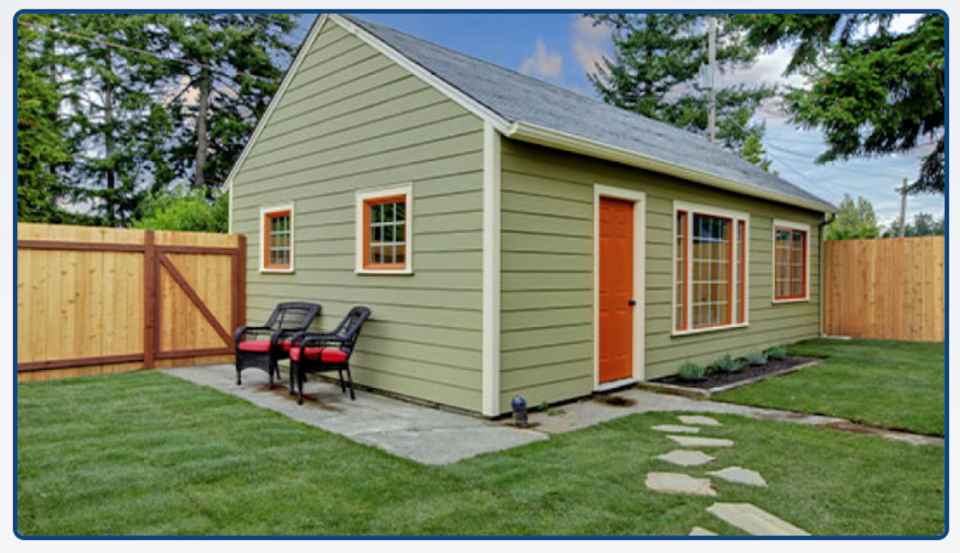Four residences on one Barrie property has been deemed a fit by city council.
It unanimously gave final approval Wednesday night to change the city’s zoning bylaw to four residences allowed on one lot, which is up from three.
“Mixed built forms make great communities,” said Deputy Mayor Robert Thomson.
The changes also involve the permitted height and setbacks of additional dwelling units.
A maximum height of 4.5 metres is permitted for the additional residential units, not the 5.5 metres originally proposed by city planning staff, minimum exterior side-yard setbacks of three metres from the 1.5 metres proposed, minimum rear-yard setbacks to three metres from 1.2 metres and minimum interior side-yard setbacks to three metres from 1.2 metres.
Coun. Bryn Hamilton asked that the words "within the built boundary," or existing developed areas of Barrie, be removed from the height and setbacks regulations.

“So by adding those four words … you’re actually still excluding hundreds of homes in the Salem and Hewitt’s areas (in south Barrie) that have already been built, developed, established neighbourhoods,” she said. “It’s about 2,000 homes that are already in existence there.”
Hamilton, whose amendment passed, said she did want to have different standards across the city.
The height and setback changes are similar to those made in 2021 to zoning regulations by the last city council, after it allowed three units per residential lot.
A setback is the distance between the nearest point of a structure or building and the property line.
That was not, however, the end of amendments.
Thomson asked that the original proposed setbacks — minimum exterior side-yard setbacks of 1.5 metres, minimum rear-yard setbacks of 1.2 metres and minimum interior side-yard setbacks of 1.2 metres — continue to apply to the approved, proposed and future draft plans of subdivision in the Salem and Hewitt’s secondary plan areas, where building permits have not been issued for their construction.
“We need to tap into some of the unbuilt locations,” he said of his amendment, which passed.
Coun. Gary Harvey’s amendment was next and it was about making housing more affordable. It also passed.
Harvey’s amendment was that staff investigate opportunities for non-condominiumized four-plexes for the purpose of sale in approved, proposed and future draft plans of subdivision in the Salem and Hewitt’s secondary plan areas where building permits have not been issued for their construction and report back to affordability committee
“A lot of what we’re seeing is condos being built,” Harvey said. “This affords potential opportunity for four-plexes to be constructed without having condo (fees) attached, like we’re seeing in the odd townhouse complex.”
Coun. Sergio Morales’ amendment, which also passed, was last.
It was that staff investigate the removal of development charges (DCs) on fourth units in the Salem and Hewitt’s secondary plan areas for approved, proposed and future draft plans of subdivision areas where building permits have not been issued for the construction and report back to affordability committee — subject the Ontario minister of municipal affairs and housing’s approval.
Development charges are designed to recover the capital costs associated with residential and non-residential growth within a municipality, from developers, so that existing residents don’t have to foot the bill.
“We need to do our part, the province needs to do their part, the feds need to do their part,” Morales said of increasing housing stock.
“These fourth units don’t become economical because of the DCs that are involved with them,” said Harvey. “And if we can use some of this accelerator funding to assist in that … we’re all that much further ahead.”
Barrie recently received $25.6 million in federal funding to fast-track more than 680 housing units during the next three years and help spur construction of 4,100 homes in the next decade.
The money came from the federal housing accelerator fund, which is a three-year, $1.2-billion program designed to encourage municipalities to address the housing supply crisis. Barrie’s plan commits to nine local programs, including permitting four units as-of-right city-wide.
Craig Millar, the city’s chief financial officer, offered council this perspective on discounted DCs.
“Remember the Development Charges Act is extremely prescribed,” he said. “You have some options. You can open your (DC) bylaw, you can provide this exemption. You can make it area-specific within your bylaw.
“But the DC Act, as written now, this is not a mandated discount that the province is giving,” Millar added. “So in the end, you have to fund it. So you have to keep development charges whole. So if you’re going to give a discount in a particular area, which you can do, you have to also identify a funding source — unless Development Charges Act legislation were to change.”
Permitting four additional residential units is also designed to align the city with provincial terminology, and is also in response to direction from the federal government.
Barrie council’s Ontario municipal housing pledge includes a target of 23,000 new residential units built by 2031, part of Bill 23, the province’s More Homes Built Faster Act of 2022, which calls for 1.5 million new homes built in Ontario, again by 2031.
Bill 23 also changed Ontario’s Planning Act to create a new provincial threshold for what is permitted in as-of-right zoning, to meet planned minimum-density targets
Barrie’s zoning bylaw had permitted, as-of-right, building a maximum of three residential units on a property.
‘As-of-right’ basically means a landowner is entitled to use or develop the property if the proposed use aligns with municipal zoning bylaws.
Council heard two deputations from the public about its four-unit zoning bylaw change.
Cathy Colebatch, an Allandale resident, questioned the real need for four units on one property.
“We have been and continue to exceed our (housing) targets,” she said. “There has been and continues to be an uptick in second and third suites. This has helped us to reach our provincial targets without adding a fourth unit. So, we are on track. Do we actually need to add a fourth unit?
“Accessory dwelling units have proven to be too costly for builders and as a result do not create affordable units. Rents upwards of $3,000 monthly, given our current economic environment are not affordable,” Colebatch added. “It only makes sense that building additional units within a home already built is going to cost less than starting from scratch.”
Karen Buck, who lives in Barrie’s east end, said she is concerned there is both an accessibility and affordability issue affecting city residents regarding housing, and does support four units.
“On residentially zoned lands, there could be building approved, but only where it is deemed to be compatible with the existing neighbourhood,” she said. “The proposed four units housing solution should be available … as one of the housing options to Barrie residents, especially if it is an option that increases both availability and affordability.”
Coun. Jim Harris has said that accessory dwelling units are not the answer to Barrie’s housing crisis. There have been 63 built in the last five years, 16 last year.


